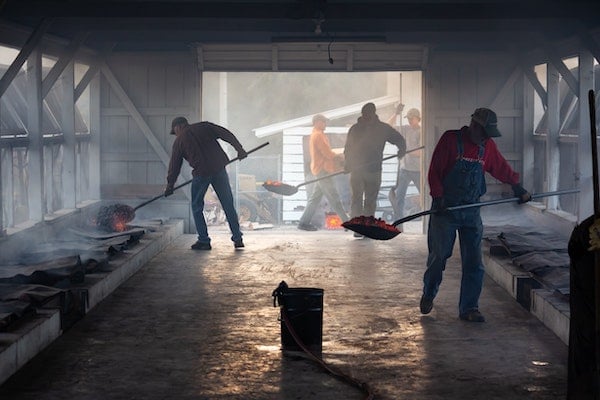Published on
Growing Non-Credit Enrollments at Community Colleges

Institutions have taken a hard financial hit due to the pandemic, and some continue to struggle. What these institutions may not realize is that they have something sitting in front of them that they can use to gain significant revenue back: non-credit offerings. Done right, non-credit education can not only help maintain enrollment rates but keep lifelong learners at the institution. In this interview, Kevin Drumm discusses what it takes to grow enrollments through non-credit programs, the roadblocks they face in doing so, and why it’s important for an institution to focus on non-credit programming.
The EvoLLLution (Evo): What are some of the biggest roadblocks that community colleges specifically face trying to grow enrollments in non-credit programs?
Kevin Drumm (KD): The biggest challenge of course, is that most of us are FTE-driven in our budgets, and it would take a significantly larger proportion of non-credit students to shore up budget holes–they’re big these days from our loss in traditional enrollments. So, that’s the biggest hurdle that we face, and that’s where our model can potentially help us.
Evo: Continuing ed divisions are frequently seen as cash cows for the university or as the revenue generating hub—why doesn’t that logic necessarily translate in the community college side?
KD: It’s the same no matter how much revenue is generated. I went to NYU for my doctorate, and there’s an enormous continuing education operation there, but it dwarfs compared to the revenue from the traditional side of the house. So, while you do get some flexible revenue, it’s marginal compared to the core business, no matter what operation you look at.
It can be a big revenue generator even when our numbers are down, which they were through the great recession. They significantly decreased since companies weren’t paying for the training because they didn’t have enough money and were laying people off. So, we were doing huge numbers before the great recession.
Even after that, it continued to be rather profitable to offer continuing education despite numbers going down substantially. In those days, the enrollment was about the same. We had about 10,000 on the non-credit side and about 10,000 on the credit side annually, but there are no comparisons to be made between the revenue totals.
Evo: How does it benefit colleges to focus on and grow access to non-credit offerings?
KD: There are two ways it benefits an institution like Broome. We’re in the 15-year process of losing 25% of our teenagers. This coming June alone, our total county high school graduating class will be down by 10%, and it will continue down until 2026. So, we’re getting hit pretty hard, and the old junior college model tends to hold sway in the northeast. The majority of our enrollments are credit students who plan to transfer, even though we have loads of one- and two-year certificates and degrees designed to get students straight into the workforce.
In other areas of the country where part-time and adult student enrollments are much higher than they tend to be in the northeast. So, we do have opportunity to grow our continuing education adult markets.
Now, we’ve always done a lot online. We were fortunate, when we had to go online last March, that we had 25% to 30% of our courses online anyway, so those students didn’t miss a beat. We were a leader there until March 19th and then everybody caught up to us, whether they liked it or not. We just happened to have all the infrastructure and training in place to be able to get the rest of our faculty up to speed.
Since the big industry pulled out 20 or 30 years ago, our real estate was flat for decades, and it has just soared recently. People are getting out of major metro areas and working from home. Our positivity rate is about .025% in Broome County, which is very low. We’re hoping that returning to college won’t spike that significantly.
But all those things might suddenly change our demographics, whereas it’s been going the other way for years. In the meantime, we’ve been focusing on short-term workforce upgrades, workforce training, certifications, micro-credentialing–that market’s been growing and now it gives us access to a monster market, compared to the shrinking one we have locally.
Evo: How important is it from a budgetary and revenue generation perspective to find ways to monetize things like college services and unused physical space?
KD: Right now, using space is not something high on our priority list because we need that spare space to socially distance. However, prior to COVID-19, we had begun very serious conversations about how some of our big spaces could be put to better use. The only way the metro area was growing was through immigration, so we were already experiencing an excess of space on campus. We were expanding one of our residence halls, and we had wait lists and were turning people away up until last year.
What might we do to repurpose some of the space in the residence hall? We’d have to negotiate with the bank to have anything other than college services or our own college students in there. But we would be prepared to have that conversation.
It was a short blip after 9/11, when people moved up this way, but then they–in a matter of a year or two–they started moving back to the metro New York area or to other metro regions in the nation. Is that going to happen this time? It’s starting to be debated. Certainly, many people are moving to more rural areas and being able to spend more time outside in this environment. Who knows if that’s going to continue.
That could change our traditional demographic market back the other way. But, right now, we’re focused on the adult market, which demands more flexible offerings. That, nationally, is the only growing market.
Evo: Does joining the marketplace replace internal efforts to scale and strengthen non-credit and career education programming or does it provide a new channel for access you’ve maintained a similar focus on developing internal strength?
KD: It’s been a struggle for us because we have such a traditional university-educated faculty here in the northeast. It’s been an employers’ market for PhDs for a long time now. So, we get great folks, but they have a traditional view of the higher education world. It’s been a struggle for us to really become progressive on the non-credit side.
It started to change over the last couple of years, as we had more of a strategic push to reach out to adult students. The rest of the country has more working adult students than traditional 18-year-olds coming to college. We’re the other way around. So, we were trying to flip that curve. A model just helps us accelerate that work and, at the same time, provides us with a bigger market.
Evo: What’s it going to take to make non-credit and career education a more central part of the strategy and focus of community colleges?
KD: Time wise, it’ll take a decade or two. Sadly, the economic realities particularly for a region like the northeast aren’t positive, maintaining a shrinking young population for longer than the rest of the country. It was only being accelerated by the overall birth dearth and the increase in taxes. As the economic reality sets in, and the northeast becomes heavily unionized, I’m telling my faculty that if they want raises in the future, 80% of our budget is enrollment-driven no matter how you slice it. The only way we can continue to provide raises is if we find a way to grow our market. As a community college, we can’t just raise our tuition in order to pay our faculty better. That’s anthemic to the philosophy of community colleges. Our only option is to push for some form of growth if we’re going to be able to continue to pay our faculty well and provide any raises at all.
That’s just the hard financial reality that we face. I assume most college presidents in the nation would love to have a well-paid faculty because they work hard, and they deserve it, but you can’t do it without the funds.
This interview was edited for length and clarity.
Disclaimer: Embedded links in articles don’t represent author endorsement, but aim to provide readers with additional context and service.
Author Perspective: Administrator
Author Perspective: Community College



